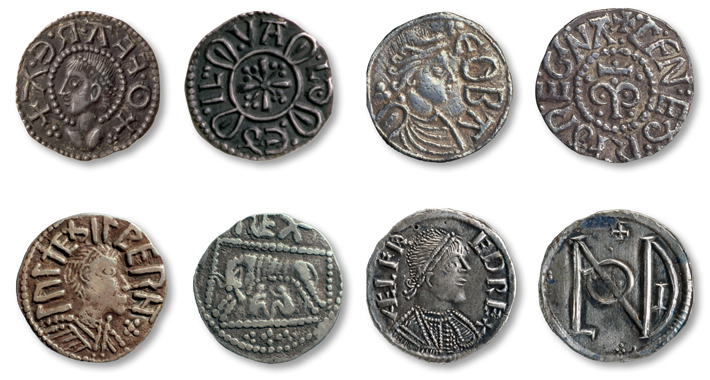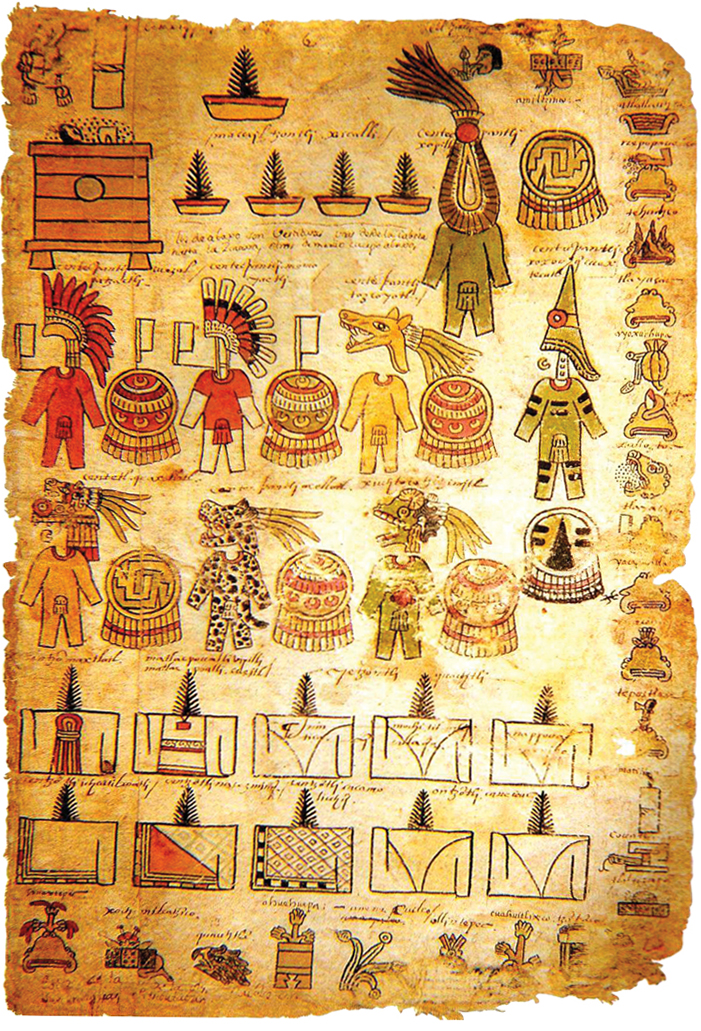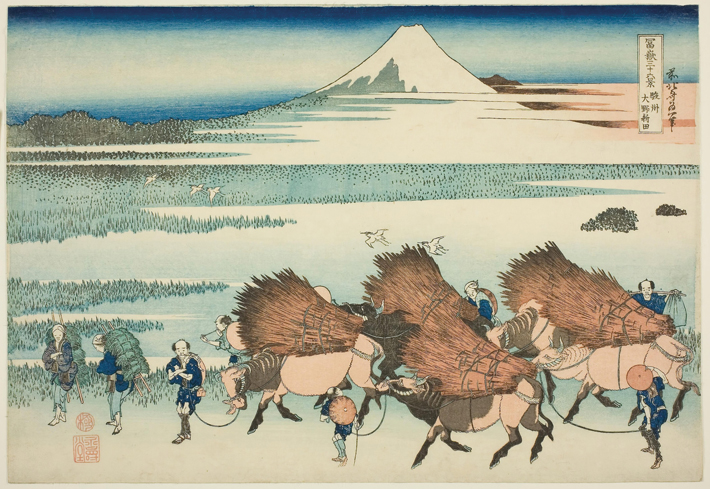Taxes
The Kings’ Dues
By JARRETT A. LOBELL
Friday, April 09, 2021
 Which came first, the taxes or the kings? It seems logical that in order for there to be taxes, there has to be some sort of central authority to administer them. But what if it were actually the taxes that were the kingmakers? That, according to zooarchaeologist Pam Crabtree of New York University, is what happened in the Anglo-Saxon period (A.D. 410–1066) in England. The end of Roman Britain and the demise of its towns and cities in the early fifth century A.D. left an administrative vacuum across the island. In the short term, people returned to a more self-supporting Iron Age lifestyle with no central government and focused on consuming the food and goods they produced locally. As the centuries went on, Crabtree explains, farmers began to produce agricultural surpluses, setting England’s inhabitants on a different course—one that included taxes. Soon, local chieftains began to claim these surpluses for their own enrichment. This eventually allowed them to declare themselves royalty. “Taxation is an important way in which this agricultural surplus can be mobilized,” says Crabtree. “The taxes and the kings grew in tandem and this led to the emergence of new kingdoms.”
Which came first, the taxes or the kings? It seems logical that in order for there to be taxes, there has to be some sort of central authority to administer them. But what if it were actually the taxes that were the kingmakers? That, according to zooarchaeologist Pam Crabtree of New York University, is what happened in the Anglo-Saxon period (A.D. 410–1066) in England. The end of Roman Britain and the demise of its towns and cities in the early fifth century A.D. left an administrative vacuum across the island. In the short term, people returned to a more self-supporting Iron Age lifestyle with no central government and focused on consuming the food and goods they produced locally. As the centuries went on, Crabtree explains, farmers began to produce agricultural surpluses, setting England’s inhabitants on a different course—one that included taxes. Soon, local chieftains began to claim these surpluses for their own enrichment. This eventually allowed them to declare themselves royalty. “Taxation is an important way in which this agricultural surplus can be mobilized,” says Crabtree. “The taxes and the kings grew in tandem and this led to the emergence of new kingdoms.”
One tax Middle and Late Anglo-Saxon kings relied on was called feorm in Old English. This was a tax paid to the king and his entourage as he traveled across his kingdom to settlements in royal territories known as vills. The tax consisted of a healthful variety of foodstuffs and animal products, including honey, pigs, and wool. In the Middle Anglo-Saxon period (ca. A.D. 650–850), kings also increasingly came to rely on tolls paid in coin—evidence of a return to a type of monetized economy that hadn’t existed since the Roman period—on goods coming through trading settlements known as wics or emporia. One such spot was Lundenwic, Anglo-Saxon London. These emporia eventually led to the rebirth of towns and cities. The Anglo-Saxons were so successful at collecting taxes that it may have spelled their downfall. “One of the main reasons why England was so attractive to the Vikings, and eventually to the Normans,” says Crabtree, “is because the country had become a very wealthy place.”
Aztec Itemized Returns
By ERIC A. POWELL
Friday, April 09, 2021
 Before the Spanish arrived in 1519, the highest officials of the Aztec Empire could count on the provinces they ruled for an annual yield of 40 jaguar skins, 70 gold bars, 2,200 pots of bee honey, 4,000 loaves of salt, 16,000 rubber balls, and two live eagles, among many, many other items. One province alone was responsible for supplying 128,000 textiles. This expansive inventory is enumerated in a lavishly illustrated codex known as the Matrícula de Tributos, a pictographic narrative that details which goods each province owed to the empire. Scholars have traditionally regarded these as a kind of tribute paid by conquered states rather than as taxes, but Arizona State University archaeologist Michael E. Smith disagrees. “Tribute is booty,” he says. “That’s what a pirate takes. What the Aztecs were doing was definitely taxation.” Smith has identified a bewilderingly complex system of at least 11 different types of taxes levied at the Aztec imperial and city-state level.
Before the Spanish arrived in 1519, the highest officials of the Aztec Empire could count on the provinces they ruled for an annual yield of 40 jaguar skins, 70 gold bars, 2,200 pots of bee honey, 4,000 loaves of salt, 16,000 rubber balls, and two live eagles, among many, many other items. One province alone was responsible for supplying 128,000 textiles. This expansive inventory is enumerated in a lavishly illustrated codex known as the Matrícula de Tributos, a pictographic narrative that details which goods each province owed to the empire. Scholars have traditionally regarded these as a kind of tribute paid by conquered states rather than as taxes, but Arizona State University archaeologist Michael E. Smith disagrees. “Tribute is booty,” he says. “That’s what a pirate takes. What the Aztecs were doing was definitely taxation.” Smith has identified a bewilderingly complex system of at least 11 different types of taxes levied at the Aztec imperial and city-state level.
Taxes paid at the city-state level were probably much more significant to the average Aztec citizen than those recorded in the colorful record seen in the codex. “The empire worked almost like a mafia protection racket between the various city-states,” says Smith, “and the average person would have seen almost no return on imperial taxes.” On the other hand, local land and market taxes, which were often paid in cacao beans or cotton, funded canals and dams, on which all Aztecs relied. The local system was so efficient and entrenched that in 1532, a Spanish official wrote of the Aztecs that “the activity of paying taxes is so well understood, that I expect they will be paying taxes in gold and silver in no time.”
Rice Farmer Rebellions
By DANIEL WEISS
Friday, April 09, 2021
 During the Tokugawa era (A.D. 1603–1868), much of Japan was ruled by the country’s military governor, called the shogun, or his retainers. The rest was divided up into several hundred semiautonomous domains overseen by powerful samurai known as daimyo. In these domains, the daimyo were free to set tax rates on local peasants as they saw fit. This included the most important tax, nengu, which claimed a portion of each domain’s rice yield. According to records from 1868, nengu rates varied wildly across these domains, from 15 percent to as much as 70 percent. Curious to see whether peasants had any impact on the rates they were subjected to, a team of researchers including Abbey Steele, a University of Amsterdam political scientist, analyzed the relationship between nengu rates and peasant tax rebellions recorded throughout the Tokugawa era. These revolts included hanran, large rebellions typically including thousands of peasants, and chosen, mass desertions in which peasants abandoned their fields and threatened not to return until their demands were met.
During the Tokugawa era (A.D. 1603–1868), much of Japan was ruled by the country’s military governor, called the shogun, or his retainers. The rest was divided up into several hundred semiautonomous domains overseen by powerful samurai known as daimyo. In these domains, the daimyo were free to set tax rates on local peasants as they saw fit. This included the most important tax, nengu, which claimed a portion of each domain’s rice yield. According to records from 1868, nengu rates varied wildly across these domains, from 15 percent to as much as 70 percent. Curious to see whether peasants had any impact on the rates they were subjected to, a team of researchers including Abbey Steele, a University of Amsterdam political scientist, analyzed the relationship between nengu rates and peasant tax rebellions recorded throughout the Tokugawa era. These revolts included hanran, large rebellions typically including thousands of peasants, and chosen, mass desertions in which peasants abandoned their fields and threatened not to return until their demands were met.
Steele and her colleagues found that, after controlling for various factors, the domains that experienced the most intense types of peasant tax resistance had, on average, nengu rates 5 percent lower than domains that did not. “Our work shows that peasants appear to have been able to influence the political development where they lived,” says Steele. While the team found that insurrections and desertions were associated with lower nengu rates, they can’t be certain that peasant resistance by itself caused the tax rate to drop. It is also unclear how recorded nengu rates were implemented in practice. Nevertheless, the researchers’ findings illustrate that even people who may seem to be at the mercy of all-powerful rulers will go to great lengths in search of a tax break.
Advertisement
Advertisement
IN THIS ISSUE
Advertisement

Recent Issues
-
 May/June 2024
May/June 2024
-
 March/April 2024
March/April 2024
-
 January/February 2024
January/February 2024
-
 November/December 2023
November/December 2023
-
 September/October 2023
September/October 2023
-
 July/August 2023
July/August 2023
-
 May/June 2023
May/June 2023
-
 March/April 2023
March/April 2023
-
 January/February 2023
January/February 2023
-
 November/December 2022
November/December 2022
-
 September/October 2022
September/October 2022
-
 July/August 2022
July/August 2022
-
 May/June 2022
May/June 2022
-
 March/April 2022
March/April 2022
-
 January/February 2022
January/February 2022
-
 November/December 2021
November/December 2021
-
 September/October 2021
September/October 2021
-
 July/August 2021
July/August 2021
-
 May/June 2021
May/June 2021
-
 March/April 2021
March/April 2021
-
 January/February 2021
January/February 2021
-
 November/December 2020
November/December 2020
-
 September/October 2020
September/October 2020
-
 July/August 2020
July/August 2020
-
 May/June 2020
May/June 2020
-
 March/April 2020
March/April 2020
-
 January/February 2020
January/February 2020
-
 November/December 2019
November/December 2019
-
 September/October 2019
September/October 2019
-
 July/August 2019
July/August 2019
-
 May/June 2019
May/June 2019
-
 March/April 2019
March/April 2019
-
 January/February 2019
January/February 2019
-
 November/December 2018
November/December 2018
-
 September/October 2018
September/October 2018
-
 July/August 2018
July/August 2018
-
 May/June 2018
May/June 2018
-
 March/April 2018
March/April 2018
-
 January/February 2018
January/February 2018
-
 November/December 2017
November/December 2017
-
 September/October 2017
September/October 2017
-
 July/August 2017
July/August 2017
-
 May/June 2017
May/June 2017
-
 March/April 2017
March/April 2017
-
 January/February 2017
January/February 2017
-
 November/December 2016
November/December 2016
-
 September/October 2016
September/October 2016
-
 July/August 2016
July/August 2016
-
 May/June 2016
May/June 2016
-
 March/April 2016
March/April 2016
-
 January/February 2016
January/February 2016
-
 November/December 2015
November/December 2015
-
 September/October 2015
September/October 2015
-
 July/August 2015
July/August 2015
-
 May/June 2015
May/June 2015
-
 March/April 2015
March/April 2015
-
 January/February 2015
January/February 2015
-
 November/December 2014
November/December 2014
-
 September/October 2014
September/October 2014
-
 July/August 2014
July/August 2014
-
 May/June 2014
May/June 2014
-
 March/April 2014
March/April 2014
-
 January/February 2014
January/February 2014
-
 November/December 2013
November/December 2013
-
 September/October 2013
September/October 2013
-
 July/August 2013
July/August 2013
-
 May/June 2013
May/June 2013
-
 March/April 2013
March/April 2013
-
 January/February 2013
January/February 2013
-
 November/December 2012
November/December 2012
-
 September/October 2012
September/October 2012
-
 July/August 2012
July/August 2012
-
 May/June 2012
May/June 2012
-
 March/April 2012
March/April 2012
-
 January/February 2012
January/February 2012
-
 November/December 2011
November/December 2011
-
 September/October 2011
September/October 2011
-
 July/August 2011
July/August 2011
-
 May/June 2011
May/June 2011
-
 March/April 2011
March/April 2011
-
 January/February 2011
January/February 2011
Advertisement






